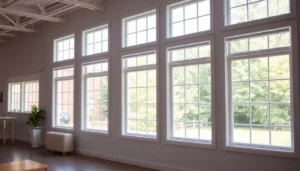Understanding Roof Repairs: What Homeowners Need to Know
A well-maintained roof is fundamental to protecting your home from the elements, enhancing its aesthetic appeal, and maintaining its value. Roof repairs are an essential aspect of home upkeep, especially given the UK’s unpredictable weather patterns that can accelerate damage over time. Whether you’ve noticed minor issues or significant damage, timely repairs can prevent costly replacements and extend the lifespan of your roof. For those seeking reliable support, understanding the nuances of roof repairs—signs, causes, services, costs, and best practices—is crucial. If you’re experiencing issues, learning how to approach repairs effectively can save you time, money, and stress. For a trusted service provider, visit roof repairs to connect with local experts dedicated to quality and durability.
Signs Your Roof Needs Repairs
Identifying early signs of roof deterioration is vital for preventing extensive damage. common indicators include:
- Visible Damage: Missing or broken tiles, slipped slates, or cracked shingles are clear signals of potential issues, especially after storms or high winds.
- Leaks and Water Stains: Interior signs such as water stains on ceilings, damp patches, or mold growth suggest roof ingress points.
- Gutter Issues: Excessive debris, sagging gutters, or overflowing during rain point towards potential roofing problems or clogged drainage.
- Sagging Roof Lines: Noticeable dips or sagging parts indicate structural weaknesses or water pooling problems.
- Age of the Roof: Generally, roofs over 15-20 years old are more prone to damage, making inspections essential even without visible issues.
Regular inspections, especially after severe weather, can help detect small problems before they escalate. Remember, early intervention not only minimizes repair costs but also prolongs your roof’s lifespan.
Common Causes of Roof Damage
Understanding what causes roof damage helps in both prevention and targeted repairs. The primary culprits include:
- Weather Extremes: Hail, heavy rain, snow, and high winds can dislodge tiles, cause leaks, and weaken structural integrity.
- Temperature Fluctuations: Freezing and thawing cycles lead to expansion and contraction, creating cracks and brittle materials.
- UV Radiation: Prolonged sunlight exposure deteriorates roofing materials, especially asphalt shingles.
- Poor Maintenance: Neglecting regular inspections or cleaning gutters allows for water buildup, leading to rot and leaks.
- Design Flaws: Inadequate ventilation or improper installation can cause premature material failure.
- Pest Infestation: Nests, termites, or rodents can compromise roof structures, leading to wood rot or holes.
Proactive measures such as routine checks, weatherproofing, and hiring qualified installers can significantly reduce these risks, safeguarding your investment.
Types of Roof Repair Services Available
Roof repairs encompass a variety of services tailored to specific issues. The most common include:
- Tile and Slate Repairs: Replacing cracked or missing tiles to restore waterproofing and appearance.
- Flat Roof Resealing: Restoring the integrity of flat roofs with specialized coatings to prevent leaks.
- Fascia and Gutter Repairs: Fixing or replacing gutters and soffits to ensure proper drainage and structural support.
- Leak Detection and Patching: Locating hidden leaks and sealing penetrations using waterproof membranes or resins.
- Full or Partial Replacements: When damage is extensive, replacing entire sections or the whole roof might be necessary.
- Chimney and Flashing Repairs: Addressing issues around chimneys and roof penetrations to prevent water ingress.
Engaging professional roofing contractors ensures these repairs are executed with durable materials and adherence to safety standards, which is critical for long-lasting results.
Planning Your Roof Repairs: Cost, Timing, and Choosing a Contractor
Budgeting for Roof Repairs in the UK
Estimating the costs involved in roof repairs is essential for proper financial planning. Average expenses vary depending on the extent of damage, roof type, and materials used. In the UK, repair costs typically range from £150 to £1,500. Minor repairs, such as fixing a small leak or replacing a few tiles, usually cost around £150-£300. Larger projects, like flat roof resealing or tile replacement over a significant area, can reach upwards of £1,000-£1,500.
Understanding the factors influencing costs helps you allocate your budget efficiently. These include the size of the roof, accessibility, type of materials, and urgency. Additionally, there are seasonal fluctuations, with prices sometimes increasing during peak repair seasons due to demand.
Finding Reliable Local Roofing Experts
Selecting a reputable contractor is crucial for quality work. Start by seeking recommendations from friends or neighbors. Online directories, such as TrustATrader or Checkatrade, offer vetted professionals with reviews and ratings. As you evaluate potential contractors, verify their credentials, insurance coverage, and experience in dealing with your specific roof type.
Always request detailed quotes and assess their communication, professionalism, and willingness to provide references. A local contractor with a good reputation like Chester Roof Repairs ensures prompt service and familiarity with regional weather conditions, which impacts roofing needs.
Scheduling and Project Timeline Expectations
Effective planning involves scheduling repairs at optimal times, generally during dry, mild weather conditions, to prevent delays and further damage. Small repairs might be completed within a day, while larger projects may take several days or weeks, depending on complexity and weather conditions.
Clear communication with your contractor about timelines, milestones, and possible disruptions helps set realistic expectations and ensures a smooth process from start to finish.
Best Practices for Effective Roof Repairs
Preparedness and Inspection Procedures
Before initiating repairs, conduct a thorough inspection of your roof. This can include visual checks from the ground or access via ladders for closer inspection. Safety is paramount; if you’re not experienced with roofing safety procedures, hire professionals. Documenting damage with photos helps in obtaining accurate estimates and reviewing progress.
Preparing your home by clearing debris from around the roof and ensuring safe access is essential to facilitate work and prevent accidents.
Using Quality Materials and Techniques
For durable, long-lasting repairs, always prioritize high-quality, appropriate materials. For instance, using premium asphalt shingles, slate, or metal suited to your roof type ensures better resistance against UK weather. Modern repair techniques like elastomeric coatings for flat roofs provide waterproofing and flexibility, accommodating movement and temperature changes.
An experienced contractor will employ methods that comply with industry standards, ensuring structural integrity and customer satisfaction.
Ensuring Safety and Compliance Standards
Roof repairs involve working at heights and handling heavy materials, making safety procedures critical. Proper safety equipment, adherence to health and safety regulations, and adequate training prevent accidents. Moreover, compliance with local building codes and regulations is vital, especially for modifications involving structural or fire safety elements.
Regular insurance and certifications demonstrate a contractor’s commitment to professional standards, providing peace of mind for homeowners.
DIY vs Professional Roof Repairs: When to Call the Experts
Risks of DIY Roof Repairs
While small fixes like replacing a broken tile might seem manageable, attempting repairs without proper knowledge can lead to serious issues. Risks include improper sealing, causing leaks, personal injury from working at heights, or further damage due to incorrect techniques. DIY repairs can also void warranties or insurance claims if not performed correctly.
Benefits of Hiring Certified Professionals
Professional roofing contractors bring expertise, safety equipment, and access to high-quality materials. Their experience ensures that repairs are durable, compliant with codes, and come with guarantees. Additionally, licensed professionals can identify underlying issues that DIY inspections might overlook, saving you money in the long run.
How to Evaluate and Select the Right Roofing Contractor
Assess potential contractors by reviewing credentials, testimonials, and previous work. Ensure they are fully insured, licensed, and experienced with your roof type. Request multiple quotes and compare services offered. An established local company, like South Yorkshire Roofing Repairs, exemplifies reliable service providers capable of handling diverse roofing needs.
Maintaining Your Roof Post-Repair: Longevity and Preventative Measures
Regular Inspection and Maintenance Tips
Post-repair maintenance prolongs the lifespan of your roof. Schedule biannual inspections, ideally in spring and autumn, to identify early signs of damage. Clean gutters regularly to prevent water buildup, remove moss and algae, and check for loose or damaged tiles after storms. Address minor issues promptly to prevent them from escalating into costly repairs.
Preventative Strategies to Avoid Future Damage
Applying protective coatings on flat roofs or sealing vulnerable areas enhances resistance against weathering. Installing robust gutters and downspouts ensures efficient drainage, reducing water-related damage. Adequate attic ventilation also minimizes condensation, which can weaken roofing materials over time.
Materials and Upgrades for Long-Term Durability
Consider upgrading to high-performance materials such as metal roofing or synthetic slate, which offer superior durability and weather resistance. Adding insulation can improve energy efficiency and prevent ice dam formation in winter. Regularly replacing worn components and using quality sealants further enhances longevity.



